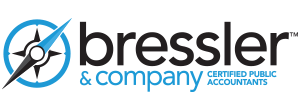7 Tax Screw-ups to Avoid
After Dec. 31, there’s nothing you can do to affect your taxes for the year that just passed, right? Not so. There are countless things you can do before you file to screw up your return. We’re talking about the stupid filing blunders that can increase your tax bill, raise the odds of unwanted IRS attention, or cost you if you get audited. Leaving aside obvious ones, such as forgetting to sign your return, here are seven tax screw-ups or missed opportunities, I see very often in my tax practice:
1. The gift that ends up taking
You probably know you need charitable organization receipts to back up any donations of $250 or more. But did you know you must actually have those receipts in hand by the time you file? Otherwise, the tax law says no write-off is allowed. Period.
For cash donations of less than $250 made in 2013, you’re not allowed any write-off unless you retain either a bank record that proves the donation (for example, a canceled check or credit card statement) or a written communication from the recipient charity that meets tax-law requirements. Therefore, small undocumented cash contributions (such as money placed on church collections plates and cash dropped in Salvation Army pots) will not result in any write-offs for you. You must get a receipt from the charity to lock in your rightful tax break. (You also must obtain charity-provided substantiation for any cash contributions of $250 or more.)
There’s more: for charitable donations of used clothes and household items, you get no deductions unless the stuff is in “good” condition or better — “household items” include furniture and furnishings, electronics, appliances, linens, and the like. In other words, no charitable write-offs for donated junk. Under an exception, you’re allowed a write-off for any single item, regardless of its condition, that is appraised at over $500 (see IRS Form 8283 for details).
2. The rollover fumble
Say you left your old job or retired in 2013 and rolled over your retirement account, tax-free, into a traditional IRA. What you’d receive from your former employer is a 1099-R that shows a taxable retirement-account distribution, even though it was tax-free. Or maybe you rolled over an existing IRA tax-free from one brokerage house to another. Again, you’d receive a 1099-R showing a taxable distribution, even though you didn’t actually have one.
The solution: Include the 1099-R figure on Line 15a of your 1040 (or Line 16a if it was a retirement-plan distribution). Then show the taxable amount—zero if you rolled everything over—on Line 15b or 16b, respectively. Be sure to write “Rollover” next to Line 15b or 16b. Blank lines will trigger an IRS inquiry about why you failed to account for the distribution shown on your 1099-R. Then you’ll become pen pals with the government as you try to explain what happened. Not fun.
3. Home cooking
If you bought an existing home last year, you may find a tax goody buried under the blizzard of paperwork. I’m talking about your right to deduct any mortgage points paid by the seller. I know that being able to write off an expense someone else has paid for sounds too good to be true. But it is true, so don’t overlook it. The only catch: you must reduce the tax basis of your new home by the amount of seller-paid points that you deduct. That will mean a bigger profit when you sell, but since you can usually exclude home sale gains up to $250,000 ($500,000 if you are married), the bigger profit probably won’t actually result in any extra federal income tax.
Another little known deduction: If you refinanced the mortgage on your home and paid any points, you have been slowly amortizing the cost of those points over the life of the loan. But say you sold your home in 2013. Many people forget they can deduct the unamortized balance in the year of sale. Use the write-off on Schedule A as “qualified residence interest.”
Here’s another deduction many people miss simply because they aren’t aware of it: If you sold a house last year, take a look at your real estate closing statement. It probably shows that you prepaid a portion of the property taxes that came due after the date of sale. You can deduct this amount on your return.
4. Who’s in charge here?
One of the most common mistakes I see is people filing as single taxpayers when they qualify for the much-more-favorable head-of-household (HOH) filing status. After I wrote about this issue a while back, a reader took my story to his accountant. A few weeks later, amended returns claiming refunds for the last several years appeared in his mailbox.
Say you’re single and your non-adult child lives with you and pays for less than half of his or her own support. If you pay more than half the household’s costs, you qualify. You may also qualify if you are still married and lived with your child but apart from your spouse for at least the last half of 2013. This could also be true for a grown child, or a grand child who lives with you under certain circumstances such as a grown child on social security disability with his or her child living in your home as well.
Finally, if you are single and can claim your parent as a dependent, you can probably file as HOH. This is true even if your parent has his or her own place. You are the HOH if you pay more than half the cost of your dependent parent’s home.
Give us, Bressler & Company, a call at 559.924.1225 if you have any questions about this. If we do your fax returns, these are things that you definitely will want to make us aware of as we go through your paperwork.





